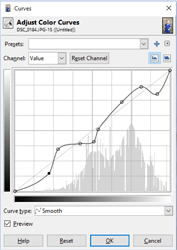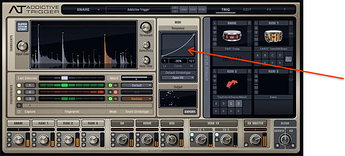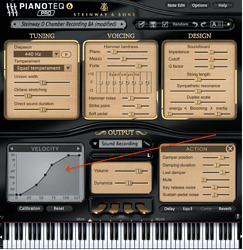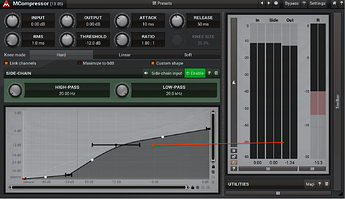Hardware, as in, if it is simple enough that even hardware can have it, then it’s simple enough nobody will have problems understanding it?
I’m not sure if that’s what are you asking about, but frequently digital keyboards allow you to pick how heavy-weight you want it to be (light, normal, heavy, etc.). Some have a number of very specific velocity curves to pick from, other allow for more sophisticated manipulation, e.g., https://www.yamahasynth.com/montage-category/montage-understanding-velocity-sensitivity.
If you want more analogue devices, then ADSR control is something very similar, a parametric curve with 4 parameters. In cases of some modules one can even change the curvature:
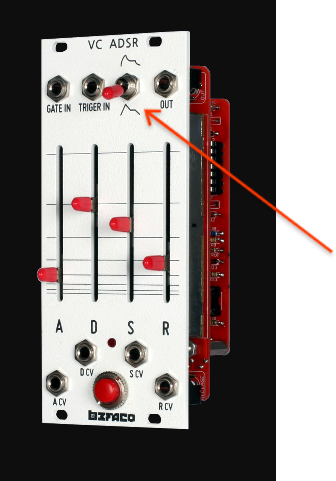
All kinds of dynamic processors (gates, compressors, expanders) are exactly volume curve adjustment. For example standard VCA compressors have a curve that is adjusted via threshold, ratio and make-up gain (and, in a way, wet/dry mix too), see https://www.soundonsound.com/techniques/parallel-compression for some graphs.
However, the most well-known curves of these type are brightness and contrast of your screen  (and gamma probably too), which appear on all kinds of monitors and projectors. Still, these are not really strictly hardware devices (would you call your laptop or smartphone a hardware?). So let me include a few software examples.
(and gamma probably too), which appear on all kinds of monitors and projectors. Still, these are not really strictly hardware devices (would you call your laptop or smartphone a hardware?). So let me include a few software examples.
The most familiar is probably the one from Photoshop, in fact this is what I get when I google “adjustment curve” in Google. Here is a screen from Photoshop and two other graphics programs:
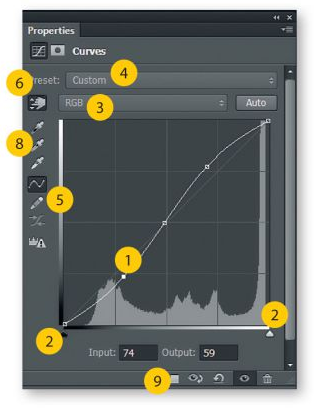
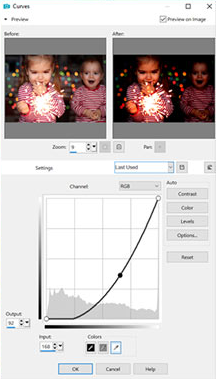
But even within music software, there are tons of examples (https://www.google.com/search?q=custom+velocity+curve+midi&tbm=isch), including
- midi generation tools like AddictiveTrigger (similar to triggering part in Dubler),
- midi filtering solutions in DAWs, like in Cantabile,
- virtual instuments like Pianoteq,
- effect plugins like MCompressor.
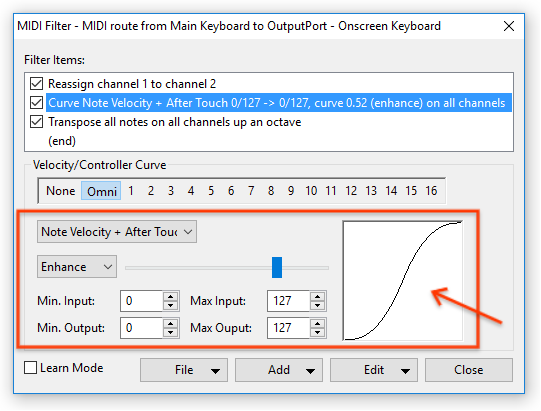
Please note that in AddictiveTrigger, which is a bit similar to Dubler, the creators thought the curve adjustment is important enough to include on the first page of the plugin, not bury somewhere deep in the options. If I were to pick one, the graph in Pianoteq is simple and very useful, it has only straight lines, but that’s ok because you can add multiple points. However, if that is hard, for example because of moving points, even something like in Cantabile (two ranges + curvature) would be awesome.

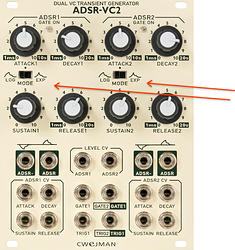


 (and gamma probably too), which appear on all kinds of monitors and projectors. Still, these are not really strictly hardware devices (would you call your laptop or smartphone a hardware?). So let me include a few software examples.
(and gamma probably too), which appear on all kinds of monitors and projectors. Still, these are not really strictly hardware devices (would you call your laptop or smartphone a hardware?). So let me include a few software examples.

